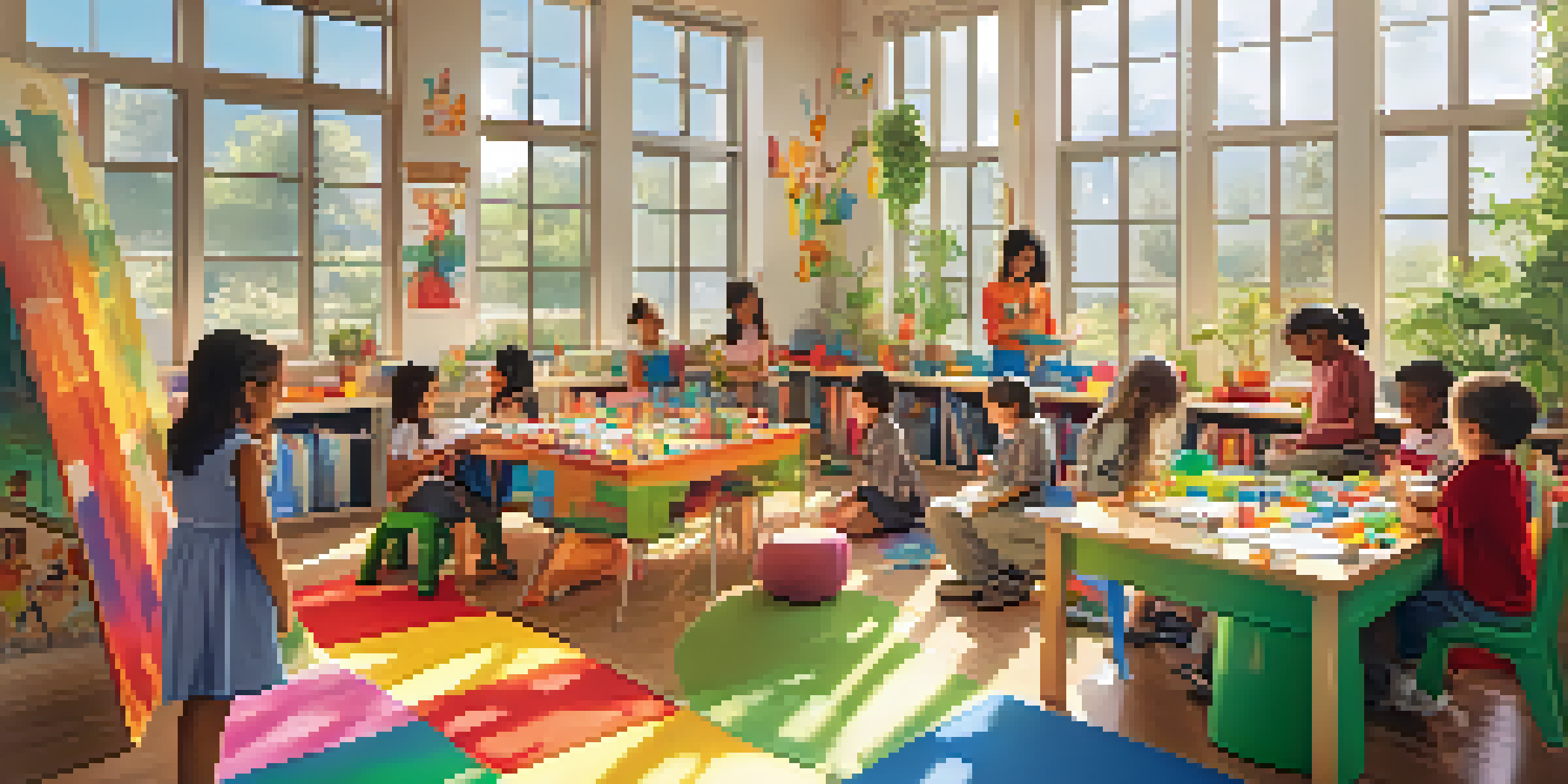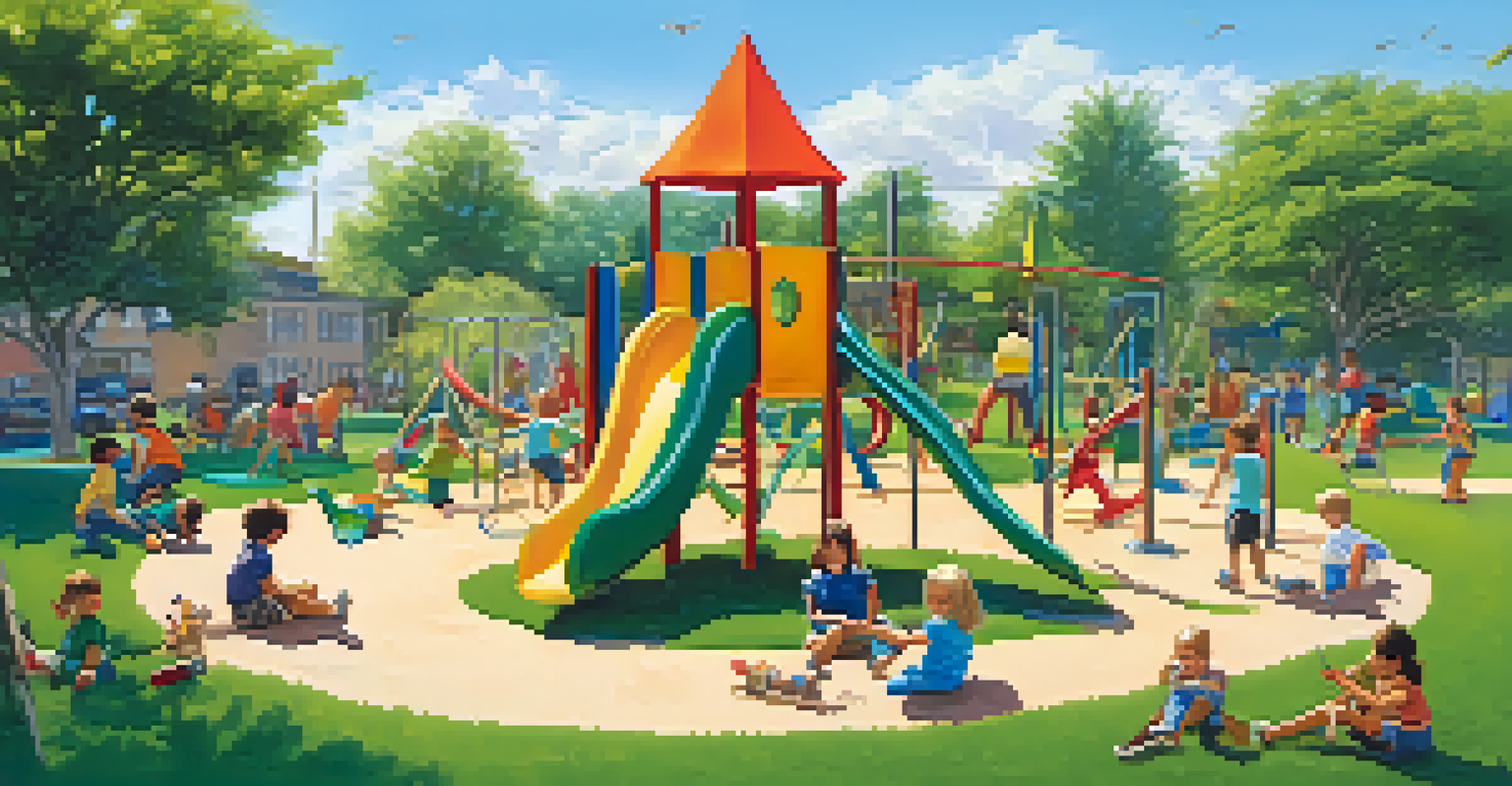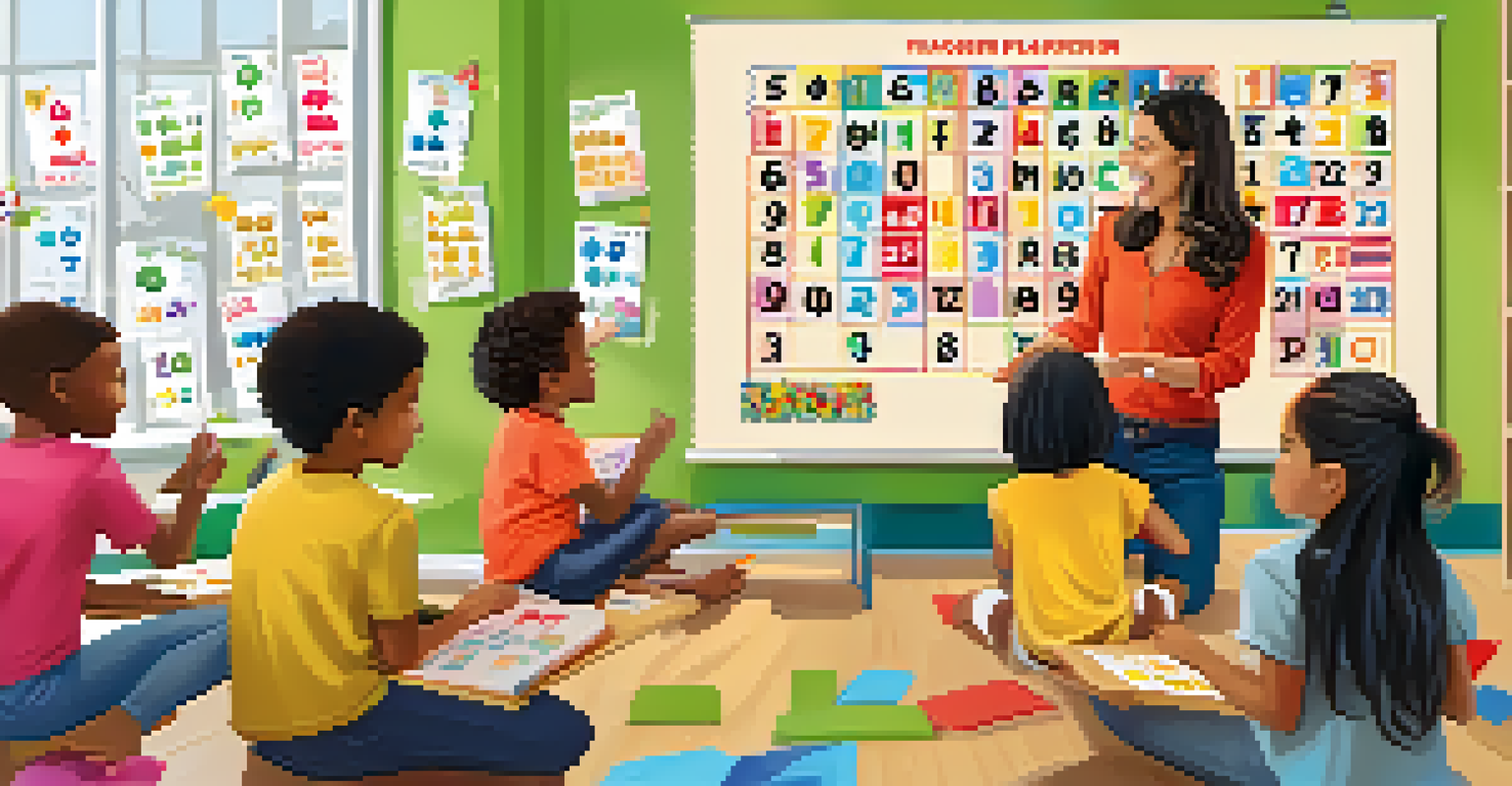Creating a Play-Friendly Classroom: Tips for Educators

Understanding the Importance of Play in Learning
Play is not just a break from learning; it's a vital part of education. It fosters creativity, problem-solving, and social skills among students. When children engage in play, they're not just having fun; they're exploring concepts and developing critical thinking abilities.
Play is the highest form of research.
Research shows that children learn best through hands-on experiences. Play allows them to experiment, make choices, and learn from their mistakes in a safe environment. This experiential learning helps solidify their understanding of various subjects, making it easier to grasp complex ideas later.
Incorporating play into the classroom can lead to improved engagement and motivation. When students are excited about learning, they're more likely to participate actively and retain information, making play an essential component of effective education.
Designing a Play-Friendly Classroom Layout
The physical layout of your classroom can greatly influence how students interact with their environment. A play-friendly classroom should have designated areas for different types of play, such as quiet reading nooks, collaborative spaces for group activities, and areas for creative play with materials like blocks and art supplies.

Flexibility is key when designing your classroom. Consider using movable furniture that can be rearranged to facilitate different activities, allowing students to adapt the space to their needs. This encourages autonomy and empowers students to take charge of their learning.
Play Enhances Learning and Skills
Play is essential for fostering creativity, problem-solving, and social skills among students.
Incorporating natural elements, such as plants, can also enhance the classroom atmosphere. A well-designed space that promotes exploration and creativity can significantly impact students' willingness to engage in play and learning.
Integrating Structured Play into the Curriculum
Structured play can be a fantastic way to blend learning objectives with fun activities. Educators can create games that reinforce academic skills, such as math bingo or word scavenger hunts. These activities not only make learning enjoyable but also help students practice essential skills in a playful context.
Children learn as they play. Most importantly, in play, children learn how to learn.
It's important to align structured play with your curriculum goals. By integrating play into lessons, you provide students with opportunities to apply what they've learned in real-world scenarios. This approach can lead to deeper understanding and retention of academic concepts.
Moreover, structured play can cater to different learning styles. Some students may thrive in competitive environments, while others may prefer collaborative play. By offering a variety of activities, you ensure that all students have the chance to engage and succeed.
Encouraging Unstructured Play Opportunities
While structured play is beneficial, unstructured play is equally important. It allows students the freedom to explore their interests and creativity without specific guidelines. This type of play fosters independence and decision-making skills, as children navigate their own play experiences.
Incorporating unstructured play into your classroom can be as simple as allowing time for free play at the end of the day. This encourages students to unwind and express themselves, promoting a positive classroom environment. Providing a variety of materials can inspire imaginative play and creativity.
Flexible Classroom Design Matters
A play-friendly classroom layout with designated areas encourages student engagement and autonomy.
Additionally, unstructured play can help students develop social skills. By interacting with peers during free play, they learn to negotiate, collaborate, and resolve conflicts, which are valuable life skills essential for their future.
Utilizing Technology in Play-Based Learning
Technology can enhance play-based learning when used thoughtfully. Interactive educational apps and games can provide students with opportunities to engage in play while reinforcing academic concepts. These tools can be particularly effective for students who may struggle with traditional learning methods.
Incorporating technology doesn't mean sacrificing hands-on play. Balancing digital and physical play experiences allows students to develop a range of skills. For instance, using coding games can teach problem-solving while still promoting creativity and collaboration.
Moreover, technology can facilitate communication and collaboration among students. Online platforms can host virtual play sessions, allowing students to connect with peers and engage in group activities, even from a distance.
Fostering a Culture of Play Among Educators
Creating a play-friendly classroom is not just about the students; it's also about fostering a culture of play among educators. Professional development opportunities can help teachers understand the value of play in learning and how to implement it effectively in their classrooms.
Collaborative planning sessions among educators can also promote sharing of ideas and resources. By working together, teachers can develop play-based strategies that cater to their unique student populations and create a cohesive learning environment.
Community Support is Crucial
Engaging parents and local organizations helps reinforce the importance of play-based learning in education.
Encouraging a mindset that values play can lead to more innovative teaching practices. When educators embrace play as a learning tool, they inspire students to take risks, explore, and enjoy the learning process.
Assessing Learning Through Play
Assessing student learning in a play-friendly classroom requires a different approach than traditional methods. Observational assessments can be incredibly valuable, allowing educators to gauge students' skills and understanding during play activities. This informal assessment method can provide insights into students' social interactions and problem-solving abilities.
Incorporating self-assessment and peer assessment can also be beneficial. Encouraging students to reflect on their play experiences and provide feedback to one another fosters metacognition and helps them understand their own learning processes.

Ultimately, the goal is to create assessments that recognize the learning that occurs through play. By valuing play-based learning, educators can create more meaningful assessments that reflect students' knowledge and skills.
Creating Community Support for Play in Education
Building a play-friendly classroom extends beyond the walls of the classroom. Engaging parents and the wider community in supporting play-based learning is essential for its success. Hosting workshops or informational sessions can educate parents about the benefits of play and how they can reinforce it at home.
Additionally, forming partnerships with local organizations can provide resources and support for play initiatives. Collaborating with community groups can lead to events, such as play days or workshops, that promote the importance of play in education.
Creating this supportive network fosters an environment where play is valued as a fundamental part of learning, encouraging not just students but also families and communities to prioritize play in their everyday lives.